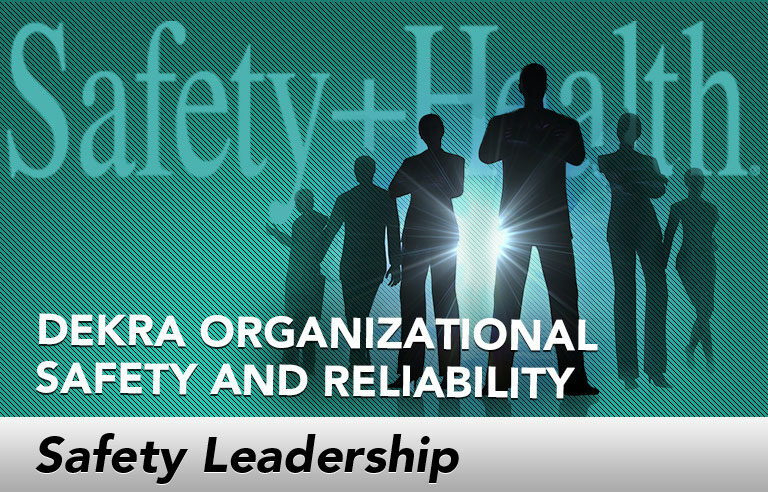Safety Leadership: A resolution for 2017: Be an intentional safety leader

Editor’s Note: Achieving and sustaining an injury-free workplace demands strong leadership. In this monthly column, experts from global consulting firm DEKRA Insight share their point of view on what leaders need to know to guide their organizations to safety excellence.
A new year is just around the corner, and with it another opportunity to adopt a resolution for a healthier, more productive year. The coming year in particular brings exciting changes in safety as technology, demographics, globalization and other issues continue to beat down the door of traditional safety thinking. So alongside better eating habits, more time with family, career milestones and other fine resolutions, I would like to offer an additional goal for your consideration: cultivating intentional (or purposeful) safety leadership.
Few of us are ever “accidentally” a safety leader. But daily life often wears down our good intentions into leadership by default. Production efforts or the latest fire can make it easy to just close our office door and bury ourselves in deadlines and paperwork. Safety becomes another activity to be checked off the list – more of a numbers routine then a leadership behavior. Although a routine isn’t a bad thing, true leadership requires intention and purpose in even the most simple actions.
Being an intentional safety leader means that safety is approached with a certain resolve. This is a challenge – intentional leaders act with purpose and focus on making safety part of the organizational culture by integrating safety as the standard way in which work is performed, creating safe production. They act rather than react, even in response.
You can begin working toward intentionality in the coming year with a few steps.
- Cultivate self-awareness. Perform a fair assessment of your own leadership behaviors. What do you do that supports (or undermines) reducing exposure at the working interface? Do you respond right away when an employee raises a problem? Do you model safe behaviors in your own work? A good understanding of your strengths and what you are capable of – as well as where you could use some help – is your foundation for ongoing improvement.
- Develop your vision. If you don’t already have a personal safety vision, 2017 is a great time to create one. Ask yourself what you really think of safety, how you see it fitting into the organization – and why it matters. For most of us, a vision is something we have to cultivate. Start by learning about what safety really is in your organization and what it would mean to get it right.
- Build a plan for delivering your safety vision. Each day you impact safety by what you do and don’t do. To have a long-term impact, safety must be integrated into production and quality. Although some separation is necessary, the vision should be to do “safe production.” Intentional leaders identify routine safety activities where they have the opportunity to have a greater impact if approached with a strategy. For example, safety stand-downs, “plan of the day” meetings, pre-job briefings, safety meetings, Job Safety Analysis reviews, safety walk-throughs, shut-downs, incident investigations and conference calls. Then, with intention, identify how to make sure your safety vision is being achieved and that your leadership behaviors are aligned with outstanding safety performance in all that you do.
- Integrate safety conversations within the path of your everyday work. Look for ways to provide feedback and direction on employee exposure. For example, when interacting with employees, look for opportunities to make safety part of the conversation. Provide team members with feedback on working safely, including both successes and guidance.
Every year brings a new and unrepeatable opportunity to get safety right. This means that as a leader, you cannot afford to be on autopilot or get caught up in a routine that is known, comfortable or easy to check off the list. Intentional leadership requires continual attention and focus – but will reward you with employees better attuned to managing exposure and the legacy of an organization better off than how you found it.
 Steven Luttrull is vice president of DEKRA Insight. Luttrull oversees complex, multi-site and multi-service safety improvement efforts for large organizations. He also provides professional development coaching to individuals.
Steven Luttrull is vice president of DEKRA Insight. Luttrull oversees complex, multi-site and multi-service safety improvement efforts for large organizations. He also provides professional development coaching to individuals.
Direct to your inbox: Sign up to be notified by email about new Safety Leadership columns.
Post a comment to this article
Safety+Health welcomes comments that promote respectful dialogue. Please stay on topic. Comments that contain personal attacks, profanity or abusive language – or those aggressively promoting products or services – will be removed. We reserve the right to determine which comments violate our comment policy. (Anonymous comments are welcome; merely skip the “name” field in the comment box. An email address is required but will not be included with your comment.)

